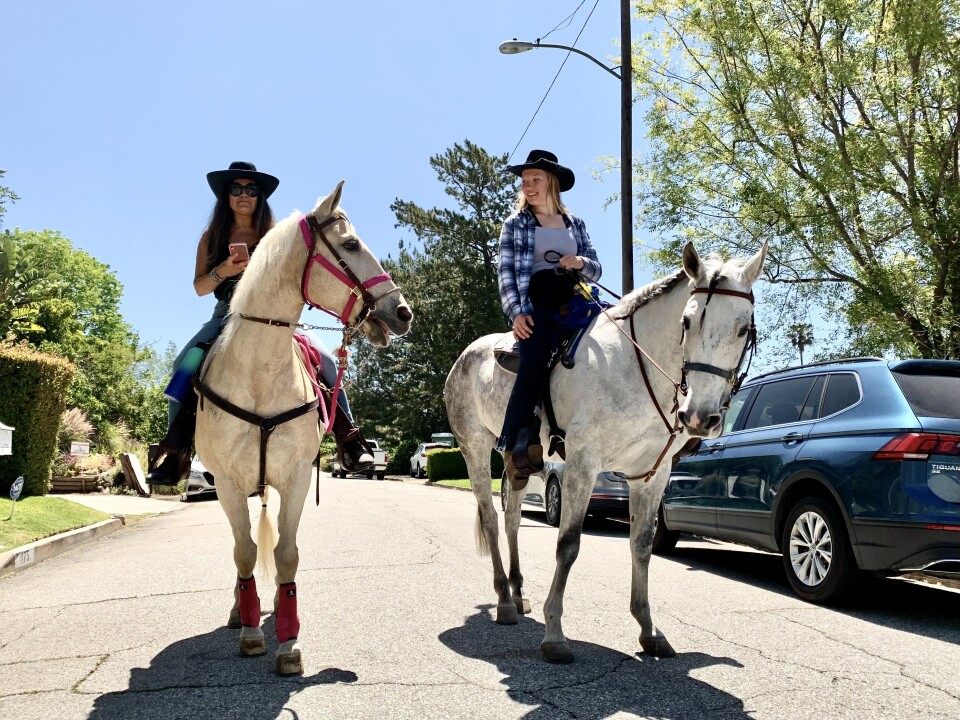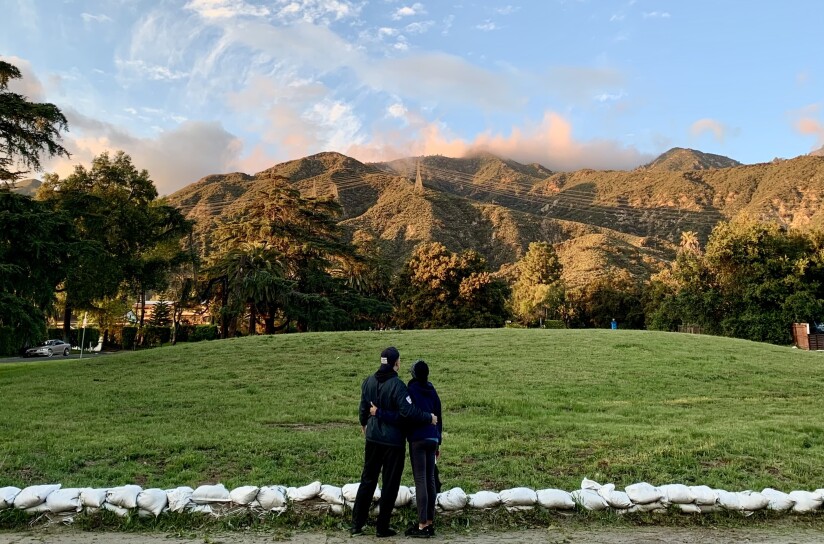Truth matters. Community matters. Your support makes both possible. LAist is one of the few places where news remains independent and free from political and corporate influence. Stand up for truth and for LAist. Make your tax-deductible donation now.
As a reporter for over 20 years, I’ve covered too many tragedies, too many natural disasters, far too many mass shootings.
Being in such close proximity to the news, you can’t help but imagine the worst-case scenario happening in your community. And yet I wasn’t ready for when the Eaton Fire ripped through our beautiful town of Altadena in the foothills and took our home and neighborhood.
I know in the aftermath of the Eaton and Palisades fires many are feeling deep pain, regret — maybe guilt about not being prepped or warning their loved ones. Maybe the shock hasn't worn off yet. Maybe the anger is setting in.
I get it. Days before the fire, I was in the weekend host chair reading forecasts about the Santa Ana winds hurtling our way. Then I headed home and went about life, unaware of the chaos about to be unleashed on tens of thousands of us across Los Angeles.
A night of evacuations
The night of the fire, a Tuesday, I was chopping up tofu and garlic for dinner when the power went out for a second time that day. It was after 6 p.m. By then, my husband and I had watched the news about the fire engulfing the Palisades.
To be on the safe side, he took the kids to our friends’ place in Sierra Madre. I put the ingredients in the fridge for dinner for another night and stayed behind to pack clothes to get us through what I thought might be a day or two of being evacuated.
After I left the house, I didn’t head straight to our friends’ place. There’s something about emergencies that activate a part of a reporter’s brain. I made detours to take video and photos like I always have covering fires in the past.
But this fire was so close to home, and getting closer.
Not long after joining my family in Sierra Madre, we ended up leaving with our friends for Monrovia to the southeast.

On the way out of town, I spoke with a group of people gathered on a street corner watching the fire race down a mountain ridge under an orange sky filled with smoke.
One man whose house was tucked up in the foothills wiped away tears, saying he was “probably saying goodbye” to his home that night.
Little did I know, the winds were blowing embers toward our part of Altadena, west of Lake Avenue.
Going home
We think our block burned down sometime after 3 a.m. Wednesday based on what the last neighbor to leave saw.
A friend confirmed it the next day with a photo. Not of our house, so as to not traumatize us but of a gargoyle from our neighbor’s yard, intact and still grimacing amid the rubble.
The day after, we drove to Altadena to see with our own eyes because I was having a hard time fathoming that our neighborhood was gone. This was before the National Guard came to reinforce checkpoints.
Going down our street, I took video of burned-out lots, charred cars with molten aluminum pooled by where tires used to be. A news crew had set up for a live shot on a corner where every home had been flattened. In my stunned state, I could acknowledge it was, visually, a great choice.
We passed by the one house that was still standing on our block of some 30 homes. Amazing.

A few doors down, we saw our house, or what was left of it.
I scanned the rubble of the room the kids shared. My daughter used to rotate the stuffed animals who slept next to her. My son kept his prized baseball gear in a box near the door.
When it would rain hard or the wind howled, I always told them how lucky we were to have this little house protect us.
From where our back yard once stood, my husband came towards me, holding out scraps of paper scorched around the edges. They were from a catalog and a coloring book.
I couldn’t believe that’s what we were left with, not the photos of my late mom, or the urns of my cat and dog. Not my hard drives holding thousands of hours of recordings of almost everyone I interviewed.
Afterward, we drove around town, taking photos and videos for friends who hadn’t been able to see their homes yet. Some had evacuated many cities away.
We would be on the move too, going from friends to friends, who fed and sheltered us.
We just made it to our fifth and last spot for a while, a rental about a 35-minute drive from home.
Back to reporting
These days, the news is hitting different. The profiles of the 17 people in Altadena who lost their lives, those were my neighbors.
Stories about how to talk to children about loss are giving me a new and needed vocabulary.
Last week, I reported from Altadena for the first time since the fire. It was hard to keep emotions in check because as you’ve probably heard by now, Altadena is a very special place, full of people with big hearts and lots of chill, all enjoying their piece of heaven in the foothills.
As I walked along Lincoln Avenue near the Super King, I saw a young couple bring avocados from their yard to a National Guard member.
It was their first time back in Altadena since the fire. Their house had survived, but to escape the smoke and ash they were staying in the South Bay, which they found too fast-paced and the people too impatient. They would be coming back and would be here to stay.
And they said they hoped I’d come back too. When you do, the man said, as he gestured down the street toward his house, you have us — your neighbors.
Fire resources and tips
If you have to evacuate:
- Why fire officials don't want you to stay and defend your home
- How to get packed up
- How to leave your house
- What evacuation terms mean and how to sign up for alerts
Navigating fire conditions:
- How to drive in high winds and fire danger
- How to prep for power outages
- How to navigate poor air quality
How to help yourself and others:
- Resources for fire victims, evacuees and first responders
- If you want to help fire victims, resist the urge to volunteer
- How to help find lost pets
How to start the recovery process:
- What to do — and not do — when you get home after a wildfire
- How to make an insurance claim
- How to safely clean up wildfire ash
What to do for your kids:
- How to talk to children about wildfires and losing a home
- What parents should know about wildfire air quality
Prepare for the next disaster:















